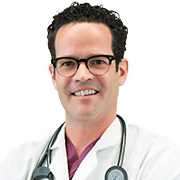According to the CDC, a heart attack occurs in the United States every 40 seconds. Also known as myocardial infarction, a heart attack occurs when part of the heart fails to receive adequate blood flow. Each year, nearly 800,000 Americans suffer a heart attack and, for more than 200,000 of them, it is a second attack.
Heart attacks can range from mild to severe, but the scary thing about them is that they can come on seemingly without warning. What’s more, about one in five heart attacks is silent – this means that it causes damage to the heart muscle but shows no sign of it. You may already know about certain risk factors for heart attack such as obesity and genetics, but there are some surprising risk factors you should learn about as well.
What Exactly Happens During a Heart Attack?
Your heart is the center of your cardiovascular system – the system that is responsible for pumping oxygenated blood throughout your body. When you breathe air into your lungs, the oxygen enters your bloodstream and is then transported throughout the body. Not only does your heart pump oxygenated blood to other vital organs, but it requires a certain amount of oxygen itself in order to function properly. When that oxygen supply is reduced or cut off, it can trigger a heart attack.
In simple terms, a heart attack happens when oxygen-giving blood flow to the heart is severely reduced or cut off completely. There are a number of different contributing factors which can cause this to happen, but atherosclerosis is the most common. If you have high cholesterol and follow an unhealthy diet, you are more likely to develop an accumulation of fat in your arteries. That fat combines with cholesterol and other substances to form plaques that thicken the artery walls, causing them to narrow which then restricts blood flow – this is called atherosclerosis.
When an artery becomes so narrowed that it restricts blood flow which triggers a heart attack. The longer the heart is deprived of oxygen, the more damage it is likely to sustain. Treatment for heart attack involves opening the blocked artery to restore blood flow. Once that goal is accomplished, additional treatments or therapies may be administered to mitigate symptoms and to repair the damage.
What Are the Risk Factors for Heart Attack?
Eating an unhealthy diet and failing to get any regular exercise are two of the biggest risk factors for heart attack along with obesity and family history. Your risk for heart attack may also be higher if you have certain cardiac risk factors such as high blood pressure or high cholesterol. What you may not know, however, is that there are some other indications which may not seem related to your heart health but could very well contribute to an increased risk for a heart attack – here are the top 5:
- Your skin is dry and scaly.
- You’ve been exposed to environmental toxins.
- You take OTC pain relievers for cold or flu.
- You have chronic shoulder pain or stiffness.
- Your ears have taken a beating.
If you have dry patches of red, scaly skin on your body – particularly on the elbows – it could be more than just dry skin, it could be psoriasis. Psoriasis is an inflammatory skin condition triggered by autoimmune activity that speeds up the life cycle of cells, causing them to accumulate on the surface of the skin in formations known as plaques. Because the driving force behind psoriasis is inflammation, it has been linked to heart disease. In fact, studies show that having psoriasis can increase your risk for heart disease by two to three times. This could also mean an increased risk of heart attack and stroke.
The air you breathe, the food you eat, and the products you use could be full of toxins without you realizing it. Though hidden toxins are dangerous, it is the obvious things like smog which are the most damaging. Environmental toxins like smog can wreak havoc on your health, but you may be surprised to learn that they could also increase your risk of heart attack. Studies show that cumulative exposure to smog can worsen cholesterol and other risk factors for heart disease and, in conjunction, heart attack.
When you are hit with the flu or develop a cold, you probably reach for over-the-counter medications to relieve the aches and pains. Nonsteroidal anti-inflammatory drugs (NSAIDs) like ibuprofen are generally regarded as safe, and they can help relieve mild symptoms. According to a study published in the Journal of Infectious Diseases, however, these same drugs could increase your risk for a heart attack if you take them while suffering from a respiratory infection. Researchers have yet to explain the link, but it could be related to an increased risk of bleeding and blood clots.
Chest pain that radiates to the neck and arm can be an early indication of heart attack, but what about shoulder pain? Chronic shoulder pain may not directly cause heart problems, but recent studies have identified a correlation between an increased risk for heart disease and shoulder trouble. In a study of 36 participants, those with numerous risk factors for heart disease were found to be 5 times more likely to have shoulder joint pain than those with no cardiac risk factors.
When you think of heart disease and heart attack risk factors, your ears probably never enter your mind. According to new research, however, prolonged or frequent exposure to loud noises was correlated with higher rates of irregular heartbeat (arrhythmia), heart failure, high cholesterol, high blood pressure, and high blood sugar. So, while noise may not directly cause heart disease, it may have a negative impact on various aspects of cardiac health which could contribute to a higher risk of a heart attack.
Heart-related symptoms are never something you should ignore, even if they seem mild. You should also keep in mind that the symptoms of heart attack look different in men than in women, so take the time to educate yourself for your own protection.











